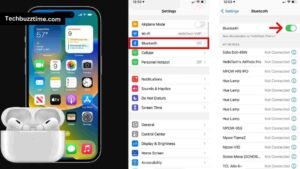Introduction to 4962.99 1043.99 577 689 808: What’s the meaning of such figures as 4962.99 1043.99 577 689 808? Every digit is essential, particularly in bookish or computer-related areas when numbers and values are accurate. By appreciating the meaning and importance of these numbers, you begin to observe patterns, trends and even possibilities in various areas of industry and usage.
It will also explain these numbers’ meanings and the parts they play in multiple situations. This guide will be helpful to anyone using data, trying to make sense of trends, or having a specific interest.
Understanding the Significance of 4962.99 1043.99 577 689 808
Although 4962.99 1043.99 577 689 808 appear arbitrary, they must belong to given classes or sets of information. For example, such numbers may reflect specific financial values, product IDs, statistical data, or industry averages.
The final idea to grasp is that when you know what these numbers imply in their particular environment, using them becomes possible. This understanding serves in contexts such as counting raw, financial, retail, and technological origins of such numbers.
How to Make Sense of 4962.99 1043.99 577 689 808 in Real-World Applications?
Every one of such numbers is of peculiar significance. For example, numbers 4962.99 may denote some monetary values in a financial report; figure 1043.99 may refer to product prices or account for inventory numbers; the numbers 577, 689 and 808 may point to countable values, used as labels or indexes to specific datasets.
Understanding what is essential behind each numeral assists with decision-making and other pertinent analyses that could be employed with cheerful and professional outcomes, whether simple or complex.
Interpreting the Real World in Mathematics, Including 4962.99 1043.99 577 689 808
All these numbers have their applications in actual-world practice. For instance, in financial analysis, the numbers 4962.99 and 1043.99 are most likely to be profit, revenue or expenses. In a retail or e-commerce environment, these figures might mean product prices, discount rates and inventory levels.
At the same time, 577, 689 and 808 can represent SKU codes, stock quantities or numbers that help monitor stocks. To clarify the purpose of these numbers, it is necessary to aim at contextual comprehension of such numbers.
Breaking Down 4962.99 1043.99 577 689 808: A Complete Guide
To fully understand these numbers, let’s break down each individually:
- 4962.99: In business, this figure could represent the total value, some financial value or indicator or a key performance indicator.
- 1043.99: Appearing most often in situations where pricing or budgeting is at issue, this number may represent the price of an item or the fee for a particular service.
- 577, 689, and 808: Conventional, it is likely that these numbers are smaller and might be used as quantity numbers, reference numbers or part numbers. They are primarily used in applications such as inventory and product control.
When each is split, one understands how the applications can be made and what these values represent.
Where Can You Find 4962.99 1043.99 577 689 808? Explained
Such numbers can be present in any documentation, databases, and settings you could think of. For example, in financial statements, 4962.99 and 1043.99 may present revenue or expense accounts.
We have 577/689/808 item numbers or reference codes in product catalogues. Knowing where these numbers lie can help optimize business finance and supply strategies. Industrial Uses of 4962.99, 1043.99, 577, 689, 808
Top Uses and Applications of 4962.99 1043.99 577 689 808
- Financial Reporting: Fractions such as lik2.99 or 1043.99 may be as important as revenues or costs.
- Inventory Management: Numbers such as 577, 689 and 808 are small enough to become an SKU code and help in tracking.
- Pricing Strategy: Assertions like 1043.9996 or 4962.9996 could be related to the price of products sold or service charges to enable companies to get the most out of their supplies.
Exploring Patterns and Trends in 4962.99 1043.99 577 689 808
As with any numbers accompanied by another or in one context with another, there may be concepts or ideas behind or within those numbers. For instance, seeing that prices or quantities exhibit specific trends in a product list can help buy or stock choices.
So, identifying patterns in numbers, let’s say 4962.99, 1043.99, or 577, 689, 808, may speak of pricing or inventory trends.
Tips for Working with 4962.99 1043.99 577 689 808 Efficiently
When handling these numbers, keep these tips in mind:
- Context Matters: It is helpful to realize that different members are used to realising different connections and interconnections, which helps them avoid mistakes.
- Use Tools: Analyzing and using numbers is more accessible when nt tools are used.
Stay Organized To make the best of numbers, Orga nizedh should be given a definite role, and their count should be correct.
Conclusion
To sum up, what means 4962.99, 1043.99, 577, 689, and 808 are not only numbers; they help account, sell, and calculate. It is essential to know when and how to use them, whether dealing with the company’s money or attempting to organize the stock. But these numbers can work perfectly if organized and according to best practices.
FAQs:
Here are common questions about 4962.99 1043.99 577 689 808.
Q1: What do such numbers mean in finance?
As a rule, such figures as 4962.99, 1043.99, and 15.002 refer to some financial parameters, while smaller numbers denote quantities or product numbers.
Q2: Where are these numbers most often employed?
It is usually applied to the finance, retail and inventory control industries.
Q3: Might patterns in these numbers help make strategic choices?
It will be helpful to answer the question that one manager inevitably asks another: YeRrecognizingtrendsan helps recognize inventory.






Be First to Comment